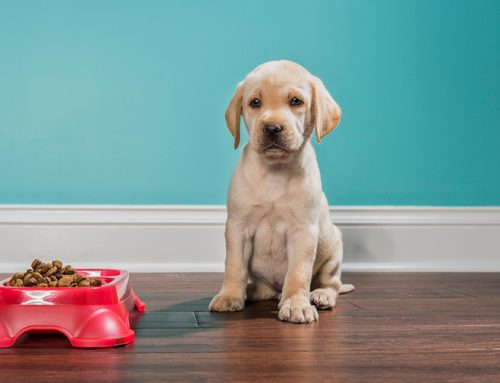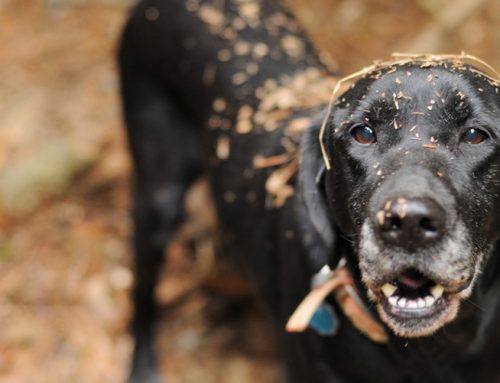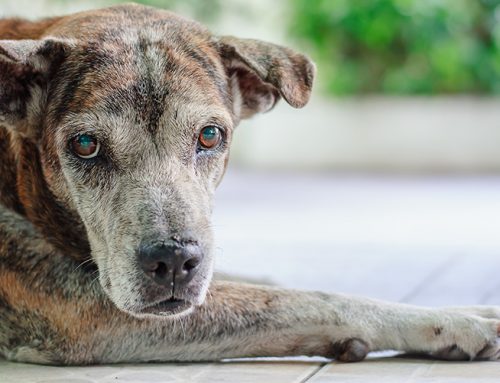My Senior Dog Doesn’t Want Food — How Can I Encourage it to Eat at Mealtime?
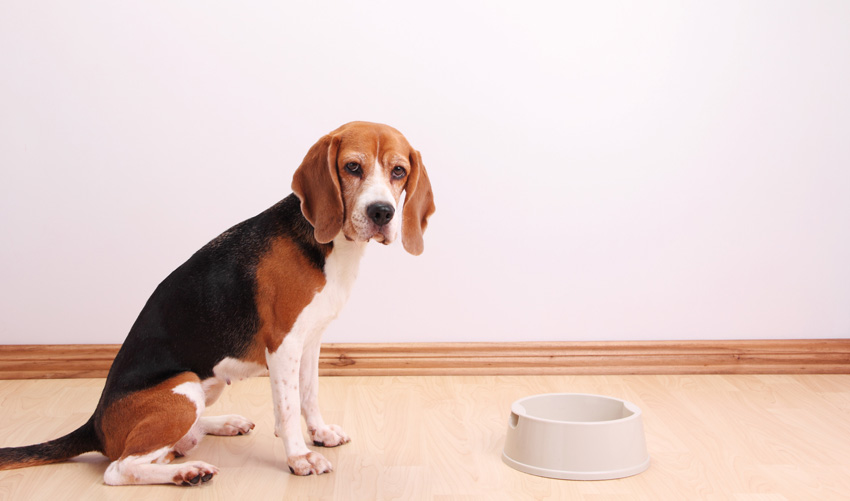
Senior and geriatric dogs require a lot of care and attention as their needs change due to medical conditions and aging.
While some dog experts claim it’s semantics when it comes to categorizing a senior dog versus a geriatric dog, others claim senior and geriatric are two distinct categories. Senior dogs are simply dogs who have reached a certain age milestone — seven to nine years old. They may still be quite active and healthy.
Geriatric dogs face significant health challenges: weakness, weight loss, slowed mobility, and fatigue. As dogs age, there will be overlap and transitional periods between these two stages.
“One could also say that pets in their last 10 percent of the lifespan qualify as geriatric,” writes vet Mary Gardner, who works exclusively with older and terminally ill pets, on DMV360.com. “Regardless of their age (or breed), our geriatric pets are those that are fragile and susceptible to adverse outcomes (e.g. falls, illness) and, therefore, need different care in the home as well as the clinic.”
It’s useful to consider these two categories when you run into an issue, like refusal to eat, with an older dog. A gradual decline in appetite is expected as dogs burn less energy and nap more in their older age.
But if your dog abruptly stops eating for a day or two and turns its nose up at anything put in front of them, book a visit with your vet to rule out or diagnose a serious medical condition. If your dog is otherwise a healthy senior, you may have less cause for alarm than if your dog already has underlying health conditions.
A change in appetite doesn’t necessarily mean your pooch is suffering from a serious illness. We’ve heard of an elderly dog who refused to eat anything except cooked pasta noodles mixed with a can of tuna in their later years. Tuna and noodles, or tuna and rice. All other meals were scorned. It could also be that your dog is having an off day or not feeling 100 percent at mealtime.
If you and your vet rule out a serious medical condition, it’s time to try some different approaches to dinner. Remember: it’s normal for older dogs to eat less food than they did when they were younger. Their metabolisms are slowing down.
Potential Reasons Your Dog Doesn’t Want to Eat
Constipation
Trouble smelling/seeing/tasting the food
Ongoing low-grade pain
Stiffness — trouble reaching their bowls
Nausea from medication
Low blood sugar
Environmental factors, like a hot day
What Can I Try to Get my Senior Dog to Eat?
Softer dog foods
Many senior dogs suffer from dental issues that make chewing hard kibble painful. Some smaller breeds — dachshunds come to mind — often have severe tooth decay and may have had several teeth removed in their older years. That makes it hard for them to comfortably chew their food.
If you’re a lifelong kibble feeder, try soaking the food with water or a healthy store-bought or homemade bone broth that doesn’t contain salt (sodium can cause problems for elderly dogs with heart and other conditions).
If your dog still isn’t munching and you’re not sure he or she will like canned food, experiment with cooking rice, sweet potato and your dog’s favorite protein. If this softer texture gets a response, try a wet/canned product for senior dogs. It might be that all your dog is looking for is some jaw relief.
Food that is simple and easy to digest
When normally healthy dogs get upset stomachs, vets often recommend feeding them rice because it’s gentle on the digestive system.
You may have to try some home cooking for your elderly friend. Sometimes dogs will be more appetized by human food like boiled veggies, chicken breast, quinoa, carrot, apple, fish, or cottage cheese. Hamburger and rice may be a tempting option.
Try to make mealtime more flavorful and fun
It might be time to try some fruits and veggies out on your dog, if this isn’t part of their normal mealtime routine. You can throw greens and some low sugar, high fiber fruits into the blender with a little bit of water, and then pour it over dinner. Or, add some high nutrient bone broth.
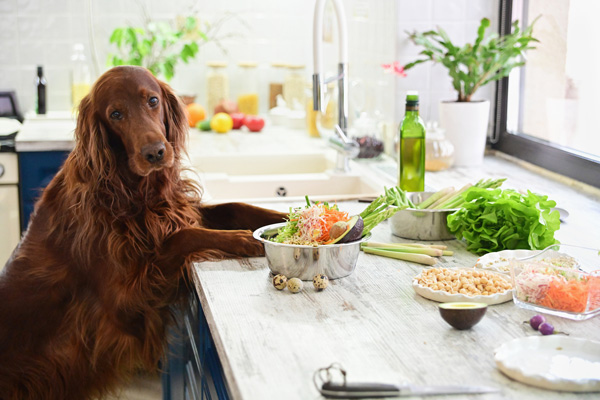
You can add these extras to their normal food, or try them out on a new commercial product.
Make mealtime delicious
Everyone wants to make sure their dog is getting a balanced, healthy meal. But sometimes, getting your dog to eat anything rather than nothing takes priority. You may need to offer your dog its favorite proteins, or something special like canned pumpkin to get it to put its nose in its bowl. You know what your dog loves to eat most. See if you can lure with its favorite foods.
Or, try new-to-your-dog food. There are so many options available that you might find a new favorite meal and your dog may be curious enough about the new smells coming from its bowl to try it out.
Get some age-appropriate exercise
Senior dogs do slow down eventually and may be more reluctant to go for a little walk to the park or around the block. But appropriate length exercise may get your dog’s appetite going, so it’s worth trying. Senior dogs tend to sleep more than their younger counterparts, so they are burning fewer calories and reducing their appetite that way too.
Rule out external factors
Is your dog more stressed than usual? Have you moved recently? Did you change the household routine, add a new member to the family, get a new pet, change the dog’s food, or try to feed your dog in a different room? Sometimes old dogs can’t learn new tricks and changes to the familiar may put them off their food. If you’ve made a major change, your dog will likely adapt. Or, if the change was something you can reverse, like feeding the dog in a new room, try going back to the original space.
What else can you do to get your senior dog to eat?
Experiment with feeding your dog at a different time of day. Maybe they are more interested in eating a few hours after they wake up, instead of first thing.
Try a new protein or food style (if your dog has a sensitive tummy, maybe mix it in with its existing food).
Try a softer food — wet, canned, semi-moist, air-dried, and even ground raw might be easier for your dog to eat.
Try a simple carb like rice or sweet potato mixed in with a home-cooked protein.
Add some healthy fats like coconut oil and Omega-3s.
Warm up your dog’s food for a few seconds in the microwave. It might be more appealing than cold food.
Review any medications your dog is on with a vet. Maybe your dog is taking a medication that has nausea as a side effect.
Sit with your dog while she or he eats. If your dog is struggling with vision or hearing loss, it may be trying to keep tabs on you instead of focussing on its food. Dogs with dementia may also need companionship to stay focussed on their bowl.
Tell your dog they were a good boy or girl after they eat. Dogs respond to positive encouragement.
Make sure your dog is still drinking water so it doesn’t get dehydrated.
Elevate your dog’s bowl if you think arthritis is making it hard to reach or place it by your dog’s favorite place to snooze.


